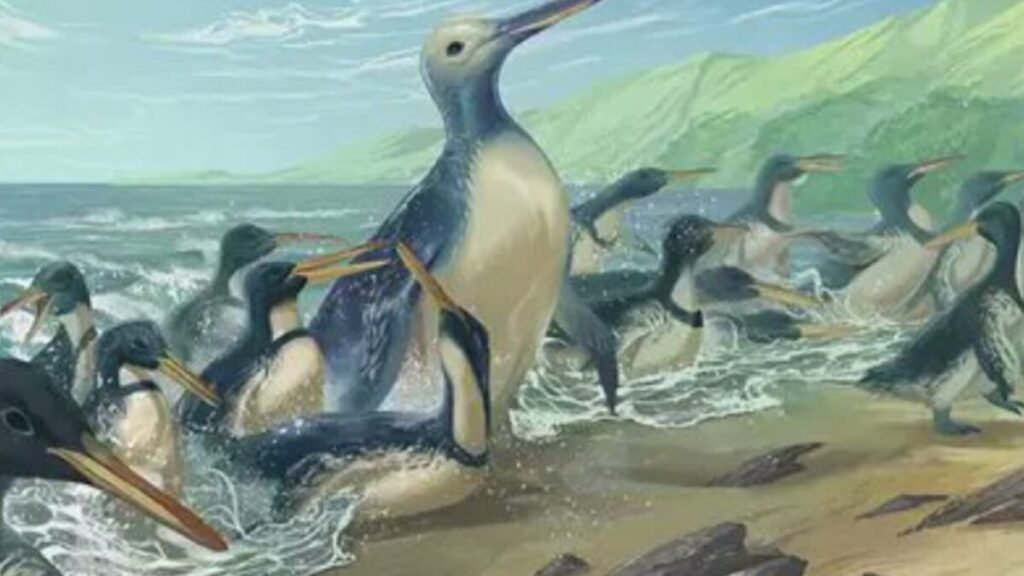” The Penguins Who Hunted with Daggers: The Fossils from New Zealand that Rewrite Their History”

Imagine a penguin from 60 million years ago: with no land predators to stalk it and armed with a straight, pointed beak to harpoon fish. That’s the image that science has just reconstructed thanks to exceptional fossils discovered in New Zealand. These findings not only change the perception of how early penguins fed, but also demonstrate that their diversity and adaptation were much greater than previously believed.
### Dagger-shaped beaks: an evolutionary weapon
The study, led by Gerald Mayr and published in, describes four new fossil species found in the Waipara Greensand formation, dating back between 62 and 58 million years. Among the remains are complete skulls and long, sharp beaks, a previously unknown characteristic in penguins. According to the researchers, these birds didn’t catch their prey like modern ones, but quickly impaled them underwater.

### An explosion of forms in ancient New Zealand
The context played a decisive role. The absence of land predators allowed the penguins to experiment with new morphologies. Some species reached sizes similar to humans. This ecological freedom favored an early and rapid diversification, right after the extinction of the dinosaurs. New Zealand became a true evolutionary laboratory.
### From land hunters to expert divers
Although dagger-shaped beaks were effective for millions of years, they eventually disappeared. Mayr and his team suggest that the adaptation to longer dives led to shorter and varied beaks, optimized for different types of prey such as small fish, krill, or squid. With this change, penguins transformed into the social and expert divers we know today in Antarctica, South America, or South Africa.
Meet Pakudyptes hakataramea, a new tiny penguin described in a paper published a few days ago by Tatsuro Ando et al. This lil bird is known from late Oligocene remains from New Zealand. It also represents the oldest-known little penguin.
### The cradle of modern penguins
The fossils found confirm that New Zealand was the epicenter of penguin evolution. From there, these birds expanded to other continents and colonized extreme environments. This fossil record not only documents their origin, but also the major shifts in their history: from land-hunting birds to marine swimmers adapted to the cold.






